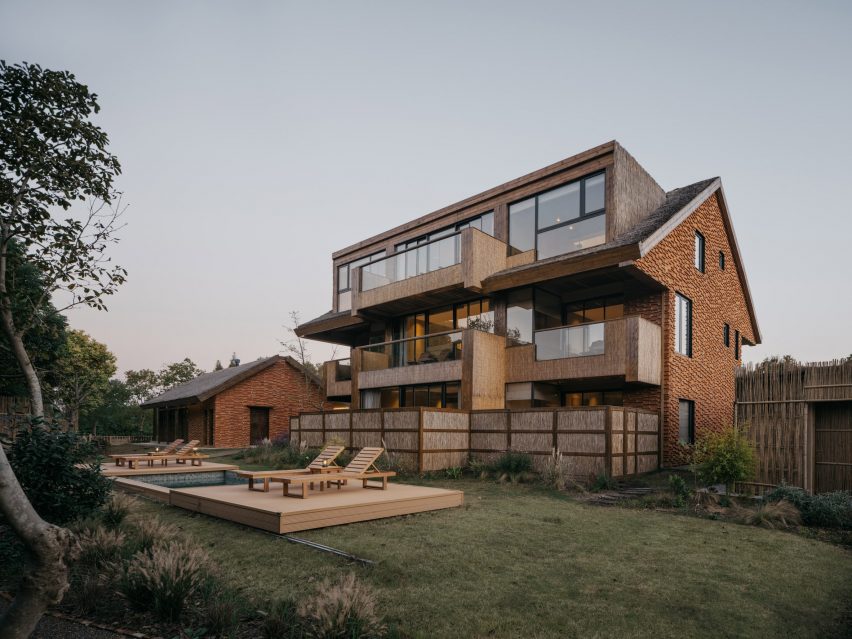Usually, artificial grass is used as a fantastic solution to replace existing natural lawns. This is often because artificial grass provides a garden or outdoor space with a stunning-looking lawn that offers excellent longevity and is incredibly low maintenance.
But, in addition to replacing lawns, artificial grass, also known as fake or synthetic turf, can also be used to give a facelift to old paths, patios and decking areas.
If you’re considering installing artificial grass in these areas, we’re here to help.
In this article, we’ll examine how to lay artificial grass on concrete, providing you with a handy guide that offers easy-to-follow tips on carrying out the task.

What You Need To Lay Artificial Grass On Concrete
Before you begin the process of laying artificial grass on concrete, it’s important that you have the right tools and equipment to do the job to the appropriate standard.
This includes:
- A sharp knife
- A measuring tape
- A shovel
- Joining tape
- A broom
- Gloves
- Concrete adhesive
Once you have all of the above, you can start the process of artificial grass installation.
How To Lay Artificial Grass on Concrete
Wondering how to lay artificial grass on concrete? Then you’re in the right place. The process is fairly straightforward, and most avid DIYers should have little trouble when following the simple steps below.
Measure The Space
The first thing you should do is measure the space where the artificial grass is going to be installed. While this seems simple, it’s actually extremely important that this is done correctly.
This is because the dimensions of your garden will determine how much artificial grass you’re going to need. If you don’t order enough, you will find yourself having to purchase more, potentially delaying the project. In contrast, if you order too much you will have wasted your money.
With this in mind, take the measurements more than once so that you’re absolutely sure it’s accurate.
Ensure Concrete Is Clean And Dry
Once you’ve measured the space and your synthetic turf has arrived, you’re almost ready to install it.
Before you do so, however, it’s important that the space is prepared properly. Grab a broom and give the area a good sweep. This should remove any dirt or debris that has formed on the concrete.
Then, use a hose and clean the concrete with hot water. This will remove any grease or stains that are on the surface, while also providing you with a good, fresh foundation to work with.
If you spot any specifically stubborn stains, you may want to use a degreaser tool that can break down the mark more invasively. This is particularly the case for paint stains.
Spread Artificial Grass Adhesive On Concrete
Mark out where your artificial grass is going to go. If you want to be extra precise, you can use chalk and string to make a border.
Then, use a trowel to spread the artificial grass adhesive across the concrete surface. Make sure you evenly slather the concrete, not leaving any gaps. This will ensure there are no gaps in your grass when it has been laid.
Lay The Grass
Once the adhesive has been applied, cut the grass into appropriately sized sections and begin the artificial grass installation.
Start laying the grass down making sure to match each piece as you go along. Make sure that you do not overlap the seams, otherwise, it could make the turf come apart more easily. Also, avoid cutting the back of artificial grass, as it might cause it to fray, tear or rip.
A good design tip is to ensure all of your grass’ fibres are pointing towards your property, as this provides it with the most attractive appearance.
Join If Necessary
If you have a particularly large garden or are using bigger-sized turf pieces, it might be necessary to join artificial grass sections together.
Simply line up the two pieces of turf, making sure to cut away any excess with a sharp knife. Then, use joining tape to bring the two pieces together. Temporarily roll back the turf, and apply some adhesive to the joining tape. Go along the turf’s seam, pushing the two bits of turf together throughout the grass. Take care not to trap any fibres in the seam, otherwise, it could result in an unsightly appearance.
Once you’re satisfied, leave the adhesive to dry.
Allow It To Settle
Once you’ve completed all of the above steps, allow the turf to settle. This should stop any wrinkles or creases from forming.
After all of the adhesive has dried, you should quickly go over the turf cleaning up any dirt or debris that may have formed during the installation process. Use a broom to sweep it, or even vacuum it if you prefer.
How To Lay Artificial Grass on Uneven Concrete
Sometimes, your concrete area may not be completely even. In some cases, your outdoor space might have an uneven concrete area, making you wonder whether artificial grass installation is possible.
Well, the good news is that installing artificial grass on most concrete surfaces is possible, even if there are visible bumps or undulations. The only occasions where this could cause issues, is if there are depressions that are more than 20mm above or below the surface. Anything less than this figure can usually be rectified by compounds or sand.
Before laying the grass, fill in any cracks or indents that have caused the concrete to become uneven. You can do this with the aforementioned compounds or sand.
Alternatively, using a foam underlay can help when laying fake turf on concrete. It will provide a smooth, even foundation on which the grass can be placed upon and also help to make the turf feel soft like a real lawn.
Often, this kind of underlay is used in schools and playgrounds as they can also help to cushion falls.
Once your artificial grass has been installed, it’s now able to be enjoyed by you and your loved ones long into the future. As mentioned earlier, artificial grass is extremely low maintenance. This means you won’t have to worry very much about turf care, and simply washing it with warm water should be sufficient.
For more information on home improvements, check out our selection of great blogs that cover a wide range of topics.





